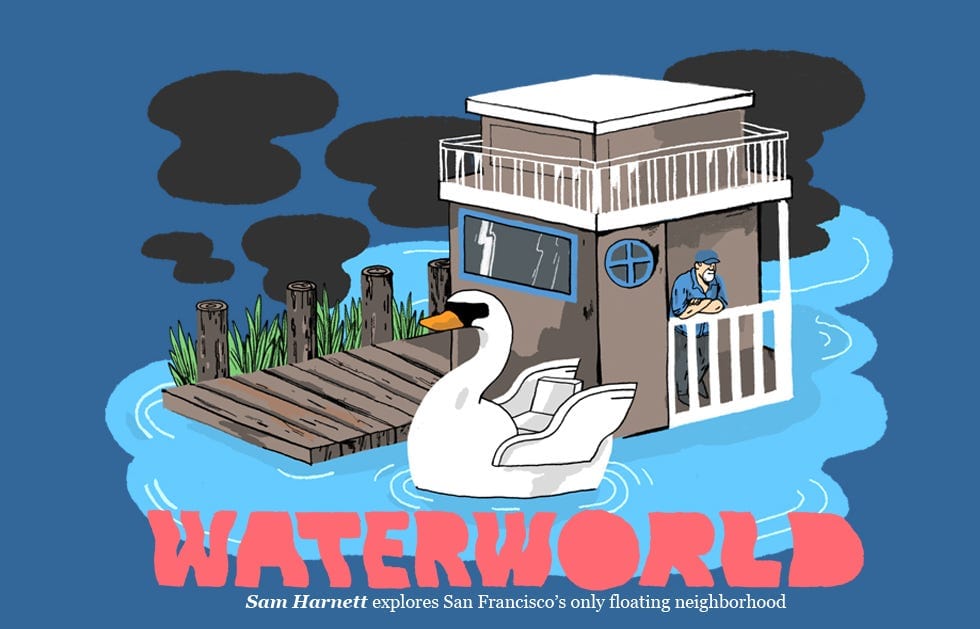
By Sam Harnett
When I heard about a community of floating homes, rocking on waves and only a 25-minute walk from downtown, I figured there wasn’t much of a story: some nuts living on the water. But I discovered that locals and day-trippers alike had never heard of these houseboats, or even of the body of water on which they rested. And that’s the beauty of San Francisco’s only floating community: anonymity.
The homes sit on a canal historically known as Mission Creek in a neighborhood rechristened in 1998 as Mission Bay. Today, the only water here that hasn’t been pushed out by concrete lies in the creek, and the only people with a direct connection to that water are the residents who live in the 20 houses floating on it. The official term for this kind of dwelling is a floating home. Houseboats actually refer to structures with a form of water propulsion, but most of the people who live in the community use this term to refer to their homes.
I make my way across the Fourth Street drawbridge by AT&T Park, down through Mission Bay Park, and up to the three locked gates that separate the houseboats from the mainland. One door has been left ajar, so I sneak through and go down to the docks that serve as the community’s central sidewalk. On one end, a man with a headset hoses down the deck outside a vinyl-sided McMansion, and on the other, there’s a wooden house adorned like a hunting lodge with piles of antlers on the roof and taxidermied lizards by the door. I head for the rustic structure and meet Bob Srnka.
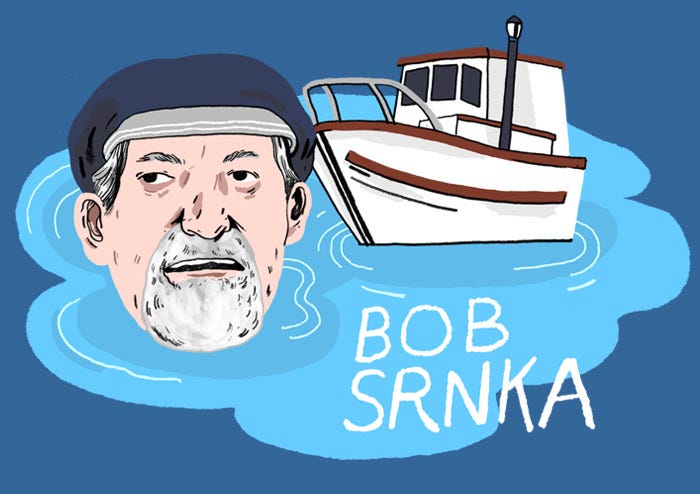
Bob has a deep tobacco stain on his mustache, long blackened fingernails, and a reputation as a talker. One of the community’s three Bobs, he has lived in the canal since 1970, back when it was still a creek and he owned the only floating home. Today, his fishing boat, Mi Vida, sits unused in a nearby slip, and serves as one of the community’s central monuments.
Bob worked for years at various Safeway stores around the Bay Area, but hunting and fishing have always been his true passions. On the other hand, his wife (who passed away last year) enjoyed urban pleasures like symphonies, operas, and museums. The houseboat gave him access to wild open waters, and allowed her to remain connected to the culture of a city. But life on the water wasn’t always smooth sailing.
A violent storm tore Bob’s first houseboat apart at the seams, sending the top deck flying into the sailboat docked in the next slip. After the accident, he built a new home with a 20-foot-deep concrete hull, a new standard for houseboats that provides stability during rough weather as well as a basement floor.
Although Bob says he’s too old to hunt anymore or go on big fishing expeditions, at the ripe old age of 84 he continues to cast his lines out into the canal from his houseboat. He sublets two of the rooms to boarders, and the supplemental income helps him stay afloat.
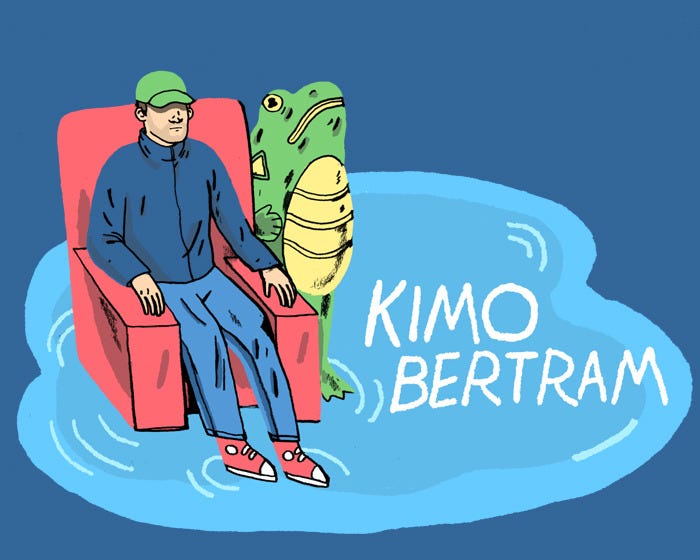
The houseboaters fall roughly into two camps: residents like Bob Srnka who have been at the creek forever and newcomers like Kimo Bertram. Kimo and his wife Sarah purchased their houseboat six months ago, making them the newest household in the canal. He says the new house has the same permanent vacation feel of a bungalow they once shared in Venice Beach.
As Kimo shows me around, I notice the house has an assortment of artistic touches. Someone has painted a small ocean scene on the wall above the bathroom doorway and sculpted a large frog out of wood for the living room. In the bedroom, two cracked, antique portholes peer out across the canal onto dry land. An arm has been carved next to the stairway, and the hand grips a rafter engraved with the phrase “New Hope.” The former owner was an artist, Kimo explains, and after he died of cancer, his wife put the houseboat on the market.
Death is one of the infrequent ways that real estate on Mission Creek becomes available. The San Francisco Port Authority has capped the community at 55 slips. Floating homes occupy 20 of the spots, and boats dock in the remaining 35. An aspiring resident would have to either acquire one of the existing houseboats or come into possession of one of the boat slips and convert it into a home.

Living on a houseboat entails more than just moving into a neighborhood; it means joining an extremely tight-knit community. Out of the 20 residences on the docks, only one has a long-term renter: indie rock musician Becky White.
Becky isn’t exactly a newcomer to life on water. It’s in her blood. In New York City, her mother lived on the Hudson River in a floating community near 79th Street. So when Becky decided to leave her spacious three-bedroom house in the East Bay, she had no qualms about checking out a houseboat listing on Craigslist.
Becky and her boyfriend pay only $1,000 a month for rent, and compared to what they would get for that in the Mission, they have a pretty sweet deal. The houseboat has two floors, a unique interior, and a back deck that leads out onto the water.

“What I’d do next time,” he says, “is just bail on the eighth day of the master cleanse.” We are sitting on the bottom floor of Tyson Graham’s bachelor dream pad and he is telling me his entire life story, including intimate details about his colon. As it turns out, Tyson knows a thing or two about bailing at the right moment.
In the late ’90s, Tyson rode the dot-com wave, working all day as a consultant for big corporations and partying all night with future millionaires. Then he took a trip to Burning Man and saw the light — the possibility of a life without a suit and tie. Now, a decade later, he has a shaved head, a few tattoos, and a houseboat he designed himself. From his back deck he can gaze wistfully at the downtown office buildings where he whiled away his late 20s and early 30s.
Shortly after moving in, Tyson was elected treasurer of the community board that oversees Mission Creek. As part of his duties, he collects rent from the residents and pays their landlord, the San Francisco Port Authority (Even though they own their houses, they rent their slips from the Port Authority).
In addition to the board, the Mission Creek houseboaters have monthly meetings to decide on community issues. Together they have worked to beautify the nearby shore with a community garden and have helped the Audubon Society keep track of the bird population. Tyson recommends that I get in touch with resident bird enthusiast Beth Kamieniecki to learn more about the creek’s plethora of flying creatures.
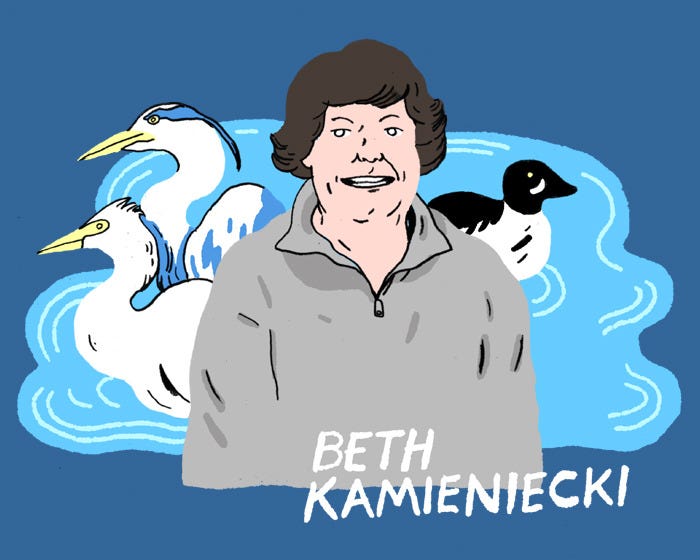
Apparently, this is the perfect season for sea birds. We are sitting in Beth’s living room and she lists all of the different birds one could see over the course of an afternoon: blue herons, egrets, goldeneyes, ruddy ducks, and the list goes on.
The birds, she explains, have put her in much better touch with the seasons, just as living down by the water has kept her more in touch with nature. The rises and falls 12 feet every day with the tide. “Sometimes,” she says, “the electricians and phone technicians don’t believe me, and the first day they lay their wires, they get snapped because there isn’t enough slack to accommodate the changing tide.”
Beth has been living in the community for 22 years and discovered her love of birds shortly after moving out onto the water. Before retiring and becoming a full-time birder, Beth worked as a corporate paralegal in the Ferry Building, and she walked to work every morning across the Fourth Street drawbridge.

As I walk across the dock and back toward dry land, I can see a good part of downtown, AT&T Park lit up with one of the last Giants games, and a long queue of rush-hour traffic on the 101 freeway. I try to imagine what the area looked like before the train yards of the 19th century and the commercial and residential development of this century.
But all I can see is the future. The young professionals streaming in and out of the new condos across the bank, and the large swath of concrete on the other bank that the city plans to redevelop over the next five years. Tyson says he thinks that the houseboats could become the next Painted Ladies. As I lock the gate behind me, I can’t help hoping he’s wrong.
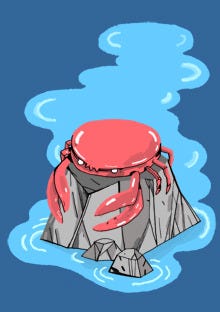

San Francisco has more microhoods than microclimates. All you have to do is get out there and look for them.
Illustrated by Niv Bavarsky



